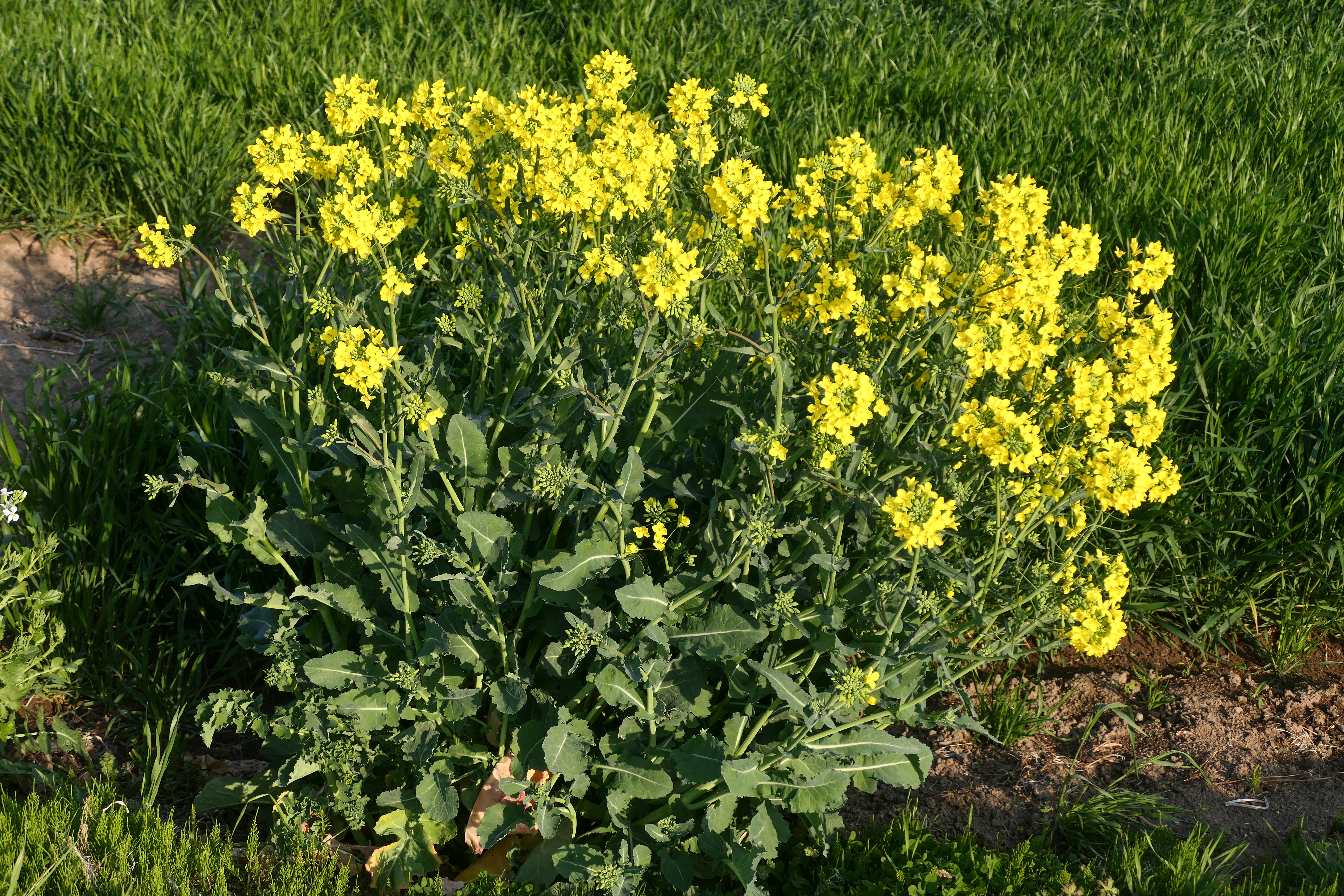Nanohana on:
[Wikipedia]
[Google]
[Amazon]
 ''Nanohana'' (菜の花) is a
''Nanohana'' (菜の花) is a
 ''Nanohana'' (菜の花) is a
''Nanohana'' (菜の花) is a Japanese
Japanese may refer to:
* Something from or related to Japan, an island country in East Asia
* Japanese language, spoken mainly in Japan
* Japanese people, the ethnic group that identifies with Japan through ancestry or culture
** Japanese diaspor ...
generic name for flowers of the Brassicaceae family. The related term, , refers to the flowers and leaf stalks of turnip
The turnip or white turnip ('' Brassica rapa'' subsp. ''rapa'') is a root vegetable commonly grown in temperate climates worldwide for its white, fleshy taproot. Small, tender varieties are grown for human consumption, while larger varieties a ...
, napa cabbage
Napa cabbage (''Brassica rapa'' subsp. ''pekinensis,'' or ''Brassica rapa'' Pekinensis Group) is a type of Chinese cabbage originating near the Beijing region of China that is widely used in East Asian cuisine. Since the 20th century, it has al ...
, cabbage
Cabbage, comprising several cultivars of '' Brassica oleracea'', is a leafy green, red (purple), or white (pale green) biennial plant grown as an annual vegetable crop for its dense-leaved heads. It is descended from the wild cabbage ( ''B.& ...
, brown mustard, zha cai
''Zha cai'' (; ), also romanized as ''Cha tsai'', is a type of pickled mustard plant stem originating in Chongqing, China. The name may also be written in English as ''cha tsai'', ''tsa tsai'', ''jar choy'', ''jar choi'', ''ja choi'', ''ja ch ...
, and broccoli
Broccoli (''Brassica oleracea'' var. ''italica'') is an edible green plant in the Brassicaceae, cabbage family (family Brassicaceae, genus ''Brassica'') whose large Pseudanthium, flowering head, plant stem, stalk and small associated leafy gre ...
, belonging to the Brassicaceae family, commonly used in Japanese cuisine
Japanese cuisine encompasses the regional and traditional foods of Japan, which have developed through centuries of political, economic, and social changes. The traditional cuisine of Japan (Japanese language, Japanese: ) is based on rice with m ...
. A type of ''nabana'', the rapeseed plant (''Brassica napus
Rapeseed (''Brassica napus'' subsp. ''napus''), also known as rape and oilseed rape and canola, is a bright-yellow flowering member of the family Brassicaceae (mustard or cabbage family), cultivated mainly for its oil-rich seed, which naturall ...
''), is used to produce rapeseed oil
Close-up of canola blooms
Canola flower
Rapeseed oil is one of the oldest known vegetable oils. There are both edible and industrial forms produced from rapeseed, the seed of several cultivars of the plant family Brassicaceae. Historica ...
(''nataneyu''). ''Nabana'' is also used for decoration.
In cuisine
The florets, stems, and leaves are all edible, and are commonly boiled and served with ''dashi
is a family of stocks used in Japanese cuisine. ''Dashi'' forms the base for miso soup, clear broth soup, noodle broth soup, and many simmering liquids to accentuate the savory flavor known as umami. ''Dashi'' is also mixed into the flour b ...
'' (stock) and ''katsuobushi
is simmered, smoked and fermented skipjack tuna (''Katsuwonus pelamis'', sometimes referred to as bonito). It is also known as bonito flakes or broadly as .
Shaved ''katsuobushi'' and dried kelp—''kombu''—are the main ingredients of ...
'' (bonito flakes). The shoots may also be pickled or served as a salad with mustard.
In culture
A festival celebrating the spring bloom of ''nanohana'', called '' Nanohana Matsuri'', is held annually in Japan.References
{{Vegetable-stub Brassica Leaf vegetables Japanese vegetables